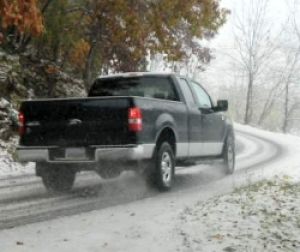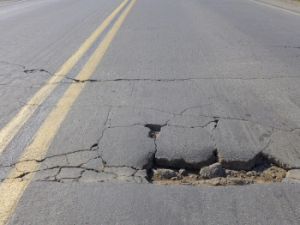Black ice is the sudden freezing of the surface of roads and walkways. Because of its unexpected nature and the fact that it is can be nearly invisible, it is a particular challenge to drivers. Unless you are a highly-experienced road warrior, you might want to learn more about black ice.
How Does Black Ice Form?
When light rain or snow falls onto a frozen concrete or asphalt surface, instant freezing occurs, producing a thin layer of clear ice that is nearly invisible to drivers. The black road surface shows through the ice – thus the name “black ice”.
Why is Black Ice so Dangerous?
Because of its smoothness, it is more slippery than regular ice that has a more irregular surface which allows for more traction. Because of its tendency to be invisible, a driver may not even be aware of it until they are already driving on it. So there is no time to avoid it.
What Roadways Are Most Prone to Black Ice?
Patches of roads that are heavily shaded by trees and buildings as well as tunnels and underpasses will be more likely to have black ice since they do not warm as quickly. In addition, bridges may often have black ice since they are higher elevations more exposed to winds.
Can I Safely Drive on Black Ice?
When conditions are right for black ice, the best advice is to use extreme caution and slow down and discontinue your cruise control. If you sense that your car is on the slippery surface of black ice, be sure to steer carefully not making any sudden, sharp motions with the steering wheel.
How Can I Recover From a Skid on Black Ice?
Once you are into a skid, the technique you’ll use to recover depends upon what type of vehicle you are driving – whether it has front- or rear- wheel drive, all-wheel drive with or without antilock brakes. See “How do I recover from a black ice skid in a front-wheel, rear-wheel or all-wheel drive car?” from ErieSense for great advice.
Auto Insurance Tip
No matter how experienced a driver you are or how cautious you try to be, accidents do happen. Before you take to the winter roads, be sure that your Auto Insurance offers you complete coverage. It is too late to do so, once an accident occurs.
Here at the Howley Insurance Agency, we are always glad to speak with you about any insurance needs. Why not contact us for a no-obligation policy review or to discuss your options.
Ol’ Man Winter has not been kind to us. Even though we welcome the end to ice and snow and the polar vortex they rode in on, we now must deal with the dreaded potholes they have left in their wake. Now, that same ice and snow has left us dodging potholes as we drive on our roads.
Potholes are more than just a nuisance. If your vehicle hits a pothole, you could be left with major damage and large repair bills. So would that repair bill be covered by your insurance? The answer is a strong “Maybe”. If your auto insurance policy includes the optional Collision coverage, then the damage to your vehicle sustained by hitting the pothole would typically be covered up to the limits of your policy and after the Collision deductible has been met.
But sometimes the damage is not limited to just your own vehicle. Potholes might cause you to lose control, and you might hit another car or perhaps even a pedestrian. Damages to the other car or the pedestrian are not covered by your Collision coverage but by your Liability coverage.
Auto Insurance Tip
Before you set out on pothole-damaged roads, check with your insurance agent to be sure that your auto insurance policy includes the Collision coverage to protect you as well as to check on your Liability coverage limits in the event you need them.
Find out more about what auto insurance policy typically covers.
Here at the Daniel Howley Insurance Agency, we can answer all your insurance questions. Why not sit down with us to review your coverages and policy limits to be sure you are protected just in case you need it.








